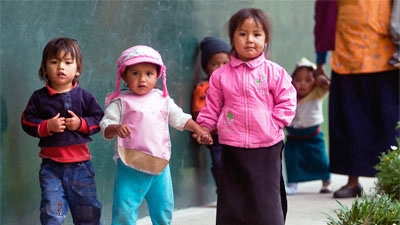Quito, April 9, 2012 - Ecuador and Peru share high rates of chronic malnutrition in children under five living in rural and indigenous areas. The World Bank has launched several initiatives to support government efforts in both countries to address the problem. Early last year, Peru began the project “Participatory intervention model to improve child nutrition,” implemented by the Fund for the Americas (FONDAM). A few months later, Ecuador launched the project “Growing with our guaguas (children),” implemented by the Chimborazo Provincial Government. Both projects received financing from the Japanese Social Development Fund through the World Bank.
At the workshop “Exchanging experiences in community monitoring,” held in Riobamba, Ecuador, the coordinators of the two initiatives signed a letter of understanding to continually exchange information with respect to the different components of the two projects. The idea is to develop a learning strategy to build capacities of the technical teams. Authorities, community leaders and representatives of governmental and non-governmental organizations and universities participated.

